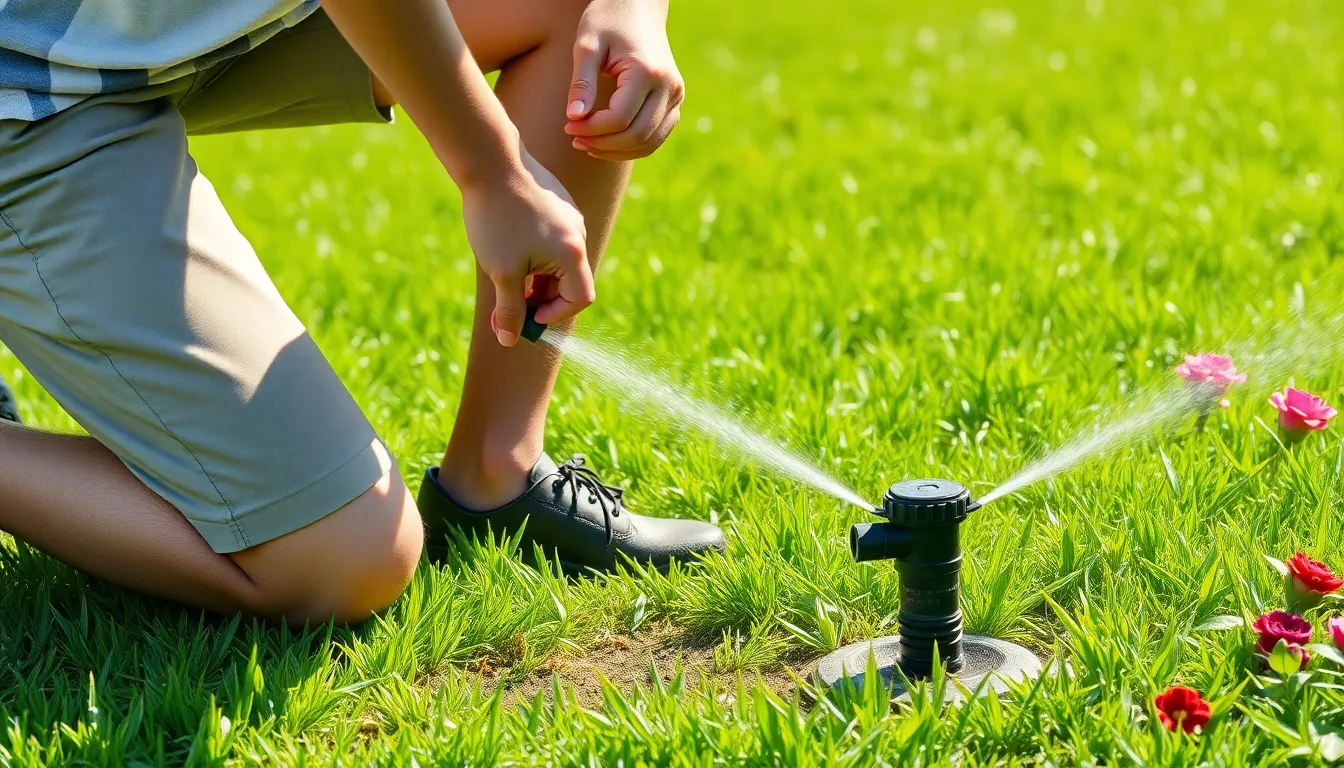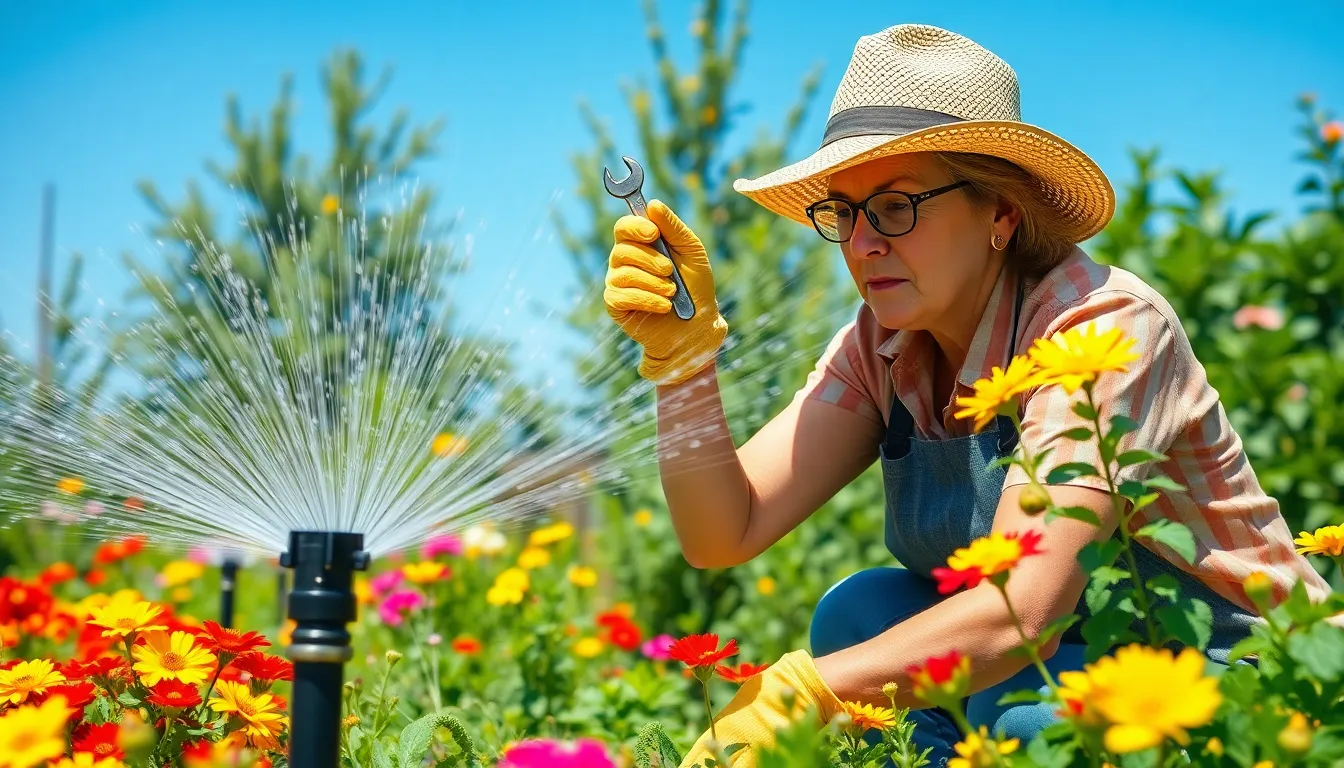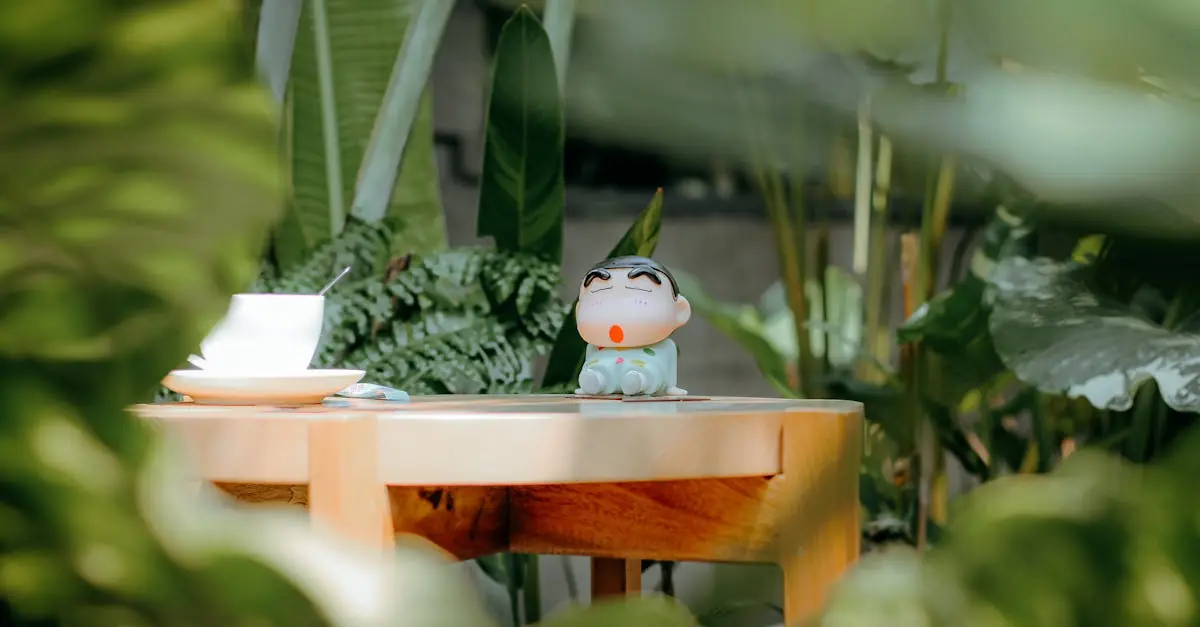A well-maintained sprinkler system is the backbone of a lush and vibrant landscape. Regular upkeep not only ensures optimal performance but also conserves water and saves money on utility bills. Many homeowners overlook the importance of sprinkler system maintenance, leading to inefficient watering and potential damage.
Understanding the key components of a sprinkler system and how they function is crucial for effective maintenance. From checking for leaks to adjusting spray patterns, a little attention can go a long way in enhancing the system’s efficiency. By prioritizing maintenance, homeowners can enjoy a thriving garden while protecting their investment.
Table of Contents
ToggleImportance Of Sprinkler System Maintenance
Maintaining a sprinkler system is crucial for optimal landscape health. Regular maintenance enhances efficiency, conserves water, and prevents damage.
Enhancing Efficiency
Efficiency in a sprinkler system significantly impacts water usage and plant health. Regular maintenance ensures even water distribution, minimizing dry spots or over-saturation. Checking sprinkler heads for clogs, properly adjusting spray patterns, and calibrating run times all contribute to improved system performance. Inspecting water pressure also helps maintain an optimal flow rate, ensuring plants receive adequate moisture without waste. Homeowners can achieve better irrigation results through these practices, leading to healthier landscapes and reduced water waste.
Preventing Damage
Preventing potential damage in a sprinkler system safeguards the investment in landscaping. Performing routine inspections helps identify leaks, worn fittings, and broken components before they escalate into costly repairs. Winterizing the system before freezing temperatures protects pipes from bursts, maintaining long-term functionality. Addressing small issues promptly minimizes future complications, ensuring the system operates effectively throughout the year. By prioritizing proactive measures, homeowners extend the lifespan of their sprinkler systems and enhance overall landscape resilience.
Routine Maintenance Tasks

Routine maintenance tasks are crucial for ensuring the longevity and efficiency of a sprinkler system. Regular inspections and adjustments prevent damage and enhance performance.
Inspecting Sprinkler Heads
Inspecting sprinkler heads involves checking for clogs and leaks. Sprinkler heads should sit level with the ground, enabling even water distribution. Adjust or replace any heads that fail to spray correctly, as uneven coverage can lead to dry spots or overwatering. Clear any debris, such as grass or dirt, that may obstruct the spray pattern. Conduct these inspections at least once a month, especially during peak growing seasons.
Checking Water Pressure
Checking water pressure helps maintain optimal flow rates in the sprinkler system. Use a pressure gauge to measure the water pressure at the faucet or designated testing locations. Ideal pressure typically ranges from 30 to 50 PSI (pounds per square inch). Too low pressure results in inadequate coverage, while too high pressure may cause damage to pipes and sprinkler components. Adjust pressure regulators if necessary to ensure consistent performance throughout the system. Perform this check seasonally or when installing a new system.
Seasonal Maintenance Considerations
Seasonal maintenance plays a critical role in the efficiency and longevity of a sprinkler system. Proper upkeep during seasonal changes ensures optimal performance and minimizes potential damage.
Spring Preparation
Spring preparation involves key tasks to ready the sprinkler system for the growing season. Homeowners should conduct a comprehensive inspection of all components, including sprinkler heads, valves, and piping. Clearing away debris from the system and testing for leaks is essential. Adjusting spray patterns to align with new plant growth ensures optimal coverage. Calibrating timers for appropriate run times prevents overwatering. Performing these tasks in early spring enhances system efficiency and promotes healthy landscape growth.
Winterization Procedures
Winterization procedures protect the sprinkler system from cold temperatures. Homeowners should begin winterization before the first frost. Draining the system completely prevents water from freezing and damaging components. Blowing out the lines using compressed air effectively removes residual water. Insulating exposed pipes and valves further safeguards against freezing. Additionally, shutting off the water supply to the system helps avoid unintended leaks during the winter months. Following these procedures preserves the integrity of the sprinkler system and ensures readiness for the spring season.
Troubleshooting Common Issues
Homeowners may encounter various issues that affect the efficiency of their sprinkler systems. Promptly addressing these problems can prevent further damage and ensure optimal performance.
Identifying Leaks
Identifying leaks is crucial for maintaining a sprinkler system. Homeowners should inspect the entire system, focusing on joints, connections, and the ground around sprinkler heads. Signs of leaks include:
- Wet areas: Puddles or unusually moist soil indicate potential leaks.
- Reduced water pressure: A noticeable drop in pressure during operation may signal leaks in pipes.
- Running water: Continuous running water when the system is off points to a leak.
Using a flow meter can help monitor water usage, highlighting unexpected spikes that suggest leaks. Repairing leaks promptly can conserve water and reduce utility costs.
Addressing Low Water Pressure
Addressing low water pressure is essential for effective watering. Homeowners should first check the pressure at the main supply. If pressure is adequate but sprinkler heads perform poorly, consider these steps:
- Obstructions: Inspect and clear any debris, such as dirt or grass clippings, from sprinkler heads.
- Clogged filters: Clean or replace any filters that may restrict flow.
- Valve issues: Examine valves for proper function, adjusting or replacing them if necessary.
If low pressure persists, it may derive from the municipal water supply or require evaluating the system’s design for potential upgrades. Ensuring adequate pressure maintains even coverage, promoting a healthy landscape.
Professional Maintenance Services
Professional maintenance services provide specialized expertise in maintaining and optimizing sprinkler systems. Engaging experts ensures both efficiency and longevity for residential and commercial landscapes.
When To Hire a Professional
Hiring a professional is essential when a sprinkler system exhibits significant issues. Unexplained water pooling, inconsistent pressure, or malfunctioning components often indicate underlying problems that require expert attention. Engaging professionals during seasonal transitions, primarily spring and fall, ensures comprehensive inspections and appropriate winterization. Additionally, if a system has not undergone maintenance for over a year, soliciting expert services can identify neglected areas requiring urgent care.
Benefits Of Expert Care
Expert care delivers numerous advantages for sprinkler system maintenance.
- Thorough Inspections – Professionals conduct detailed evaluations, identifying leaks and potential failures not easily visible to homeowners.
- Optimal Calibration – Experts adjust timers, pressure regulators, and spray patterns, ensuring efficient water use and effective coverage.
- Advanced Troubleshooting – Professionals leverage specialized tools for detecting issues, such as significant pressure drops or hidden leaks, allowing for prompt repairs.
- Comprehensive Winterization – Experts implement proven winterization techniques, safeguarding systems against freeze damage, which can significantly degrade performance.
- Increased Longevity – Regular professional maintenance extends the lifespan of components, reducing the need for costly replacements and ensuring long-term efficiency.
Utilizing professional services for sprinkler system maintenance promotes a healthy landscape while conserving water and reducing utility costs.
Regular maintenance of a sprinkler system is vital for achieving a lush and vibrant landscape. By prioritizing upkeep homeowners can enhance efficiency while conserving water and reducing utility costs. Routine inspections and adjustments prevent small issues from escalating into costly repairs.
Seasonal tasks such as winterization and spring preparations ensure the system operates optimally throughout the year. Professional maintenance services offer additional peace of mind by addressing complex problems and ensuring comprehensive care. With consistent attention and expert support homeowners can enjoy a thriving garden while safeguarding their investment in their sprinkler system.







